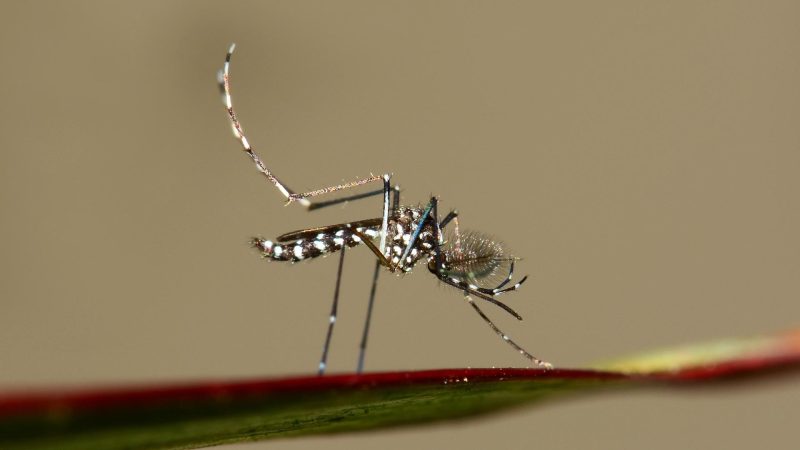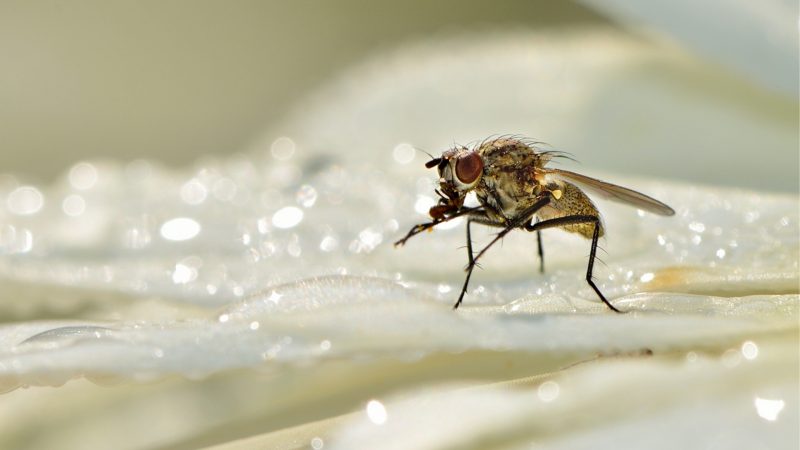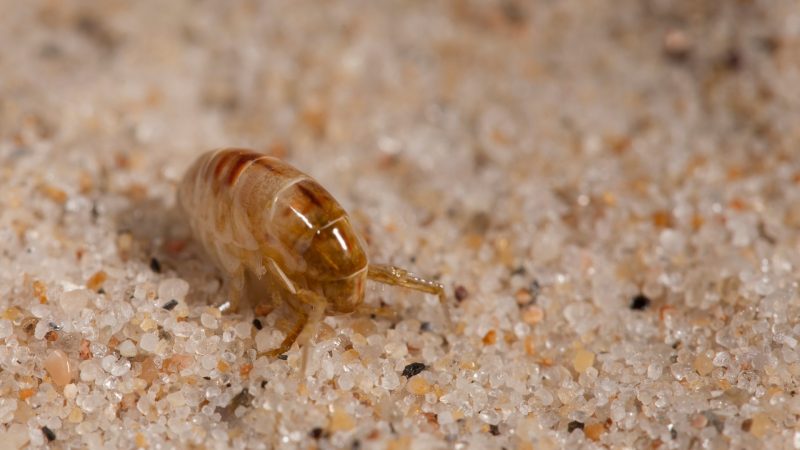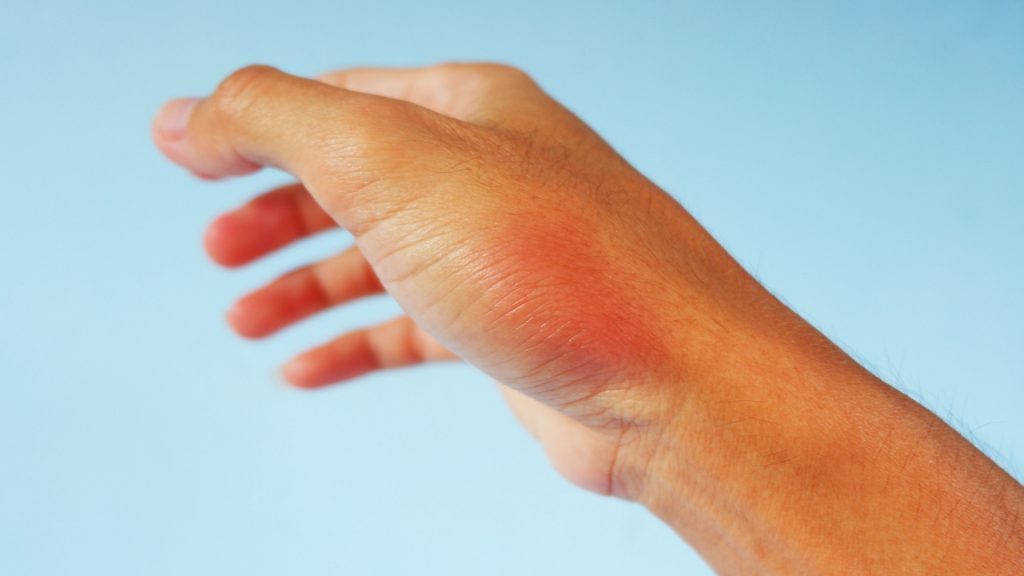Outdoor activities can be fun, but it won’t be anymore if you encounter little black bugs that bite. These tiny black bugs that bite and itch are nasty pests that can ruin your day anytime.
Black bugs are tiny, barely noticeable pests with a big bite, leaving small red bumps and a crawling sensation on your skin. They’re parasitic and feed on warm-blooded animals and humans. Some of the most common littel black bugs are the following:
1. Bird mites
2. Mosquitoes
3. Fleas
4. Gnats
5. Insidious flower bugs
6. Minute pirate bugs
7. No-see-ums
In the United States alone, several small black bugs bite people and pets.
They’re usually attracted to your garden and yard due to the soil that contains organic materials, such as compost, wood chips, and more.
In this article, we’ll go through the most common black bugs that bite, including their scientific name, lifespan, diet, and habitat. This article also discusses the symptoms of their bites and how to get rid of them.
What Are the Common Black Bugs That Bite?
Bird Mites
Bird mites are parasitic pests and are one of the tiny black flying bugs that bite that can grow about 1/32 of an inch in length. They have a sharp mouthpiece used for penetrating their host’s skin to feed their blood.
You can identify them apart from other common black bugs by the following physical characteristics:
- Flattened oval body covered in short hairs
- Brownish or greyish in color but can appear darker after feeding
- Eight legs and two main body parts
This type of black bug is parasitic to poultry and birds. They live on wild and domestic birds, such as the following:
- Poultry
- Pigeons
- Starlings
- Sparrows
- Robins
These mites live on birds or bird’s nests their whole life, but if the bird dies or the nest they live on is abandoned, they’ll look for other hosts. They can intrude into homes and bite humans, but they can’t reproduce on human blood.
Identification of Bird Mites
- Scientific Name: Dermanyssus gallinae
- Size: 1/32 of an inch
- Lifespan: 7 days to several weeks
- Habitat: Birds, crack in woods
- Diet: Blood of hosts, such as chickens, pigeons, sparrows, doves, and starlings. They also feed on human blood in the absence of their primary host.
- Threat: Infest chickens resulting in serious illness that leads to reduced egg production. Bacterial skin infection to some people.
- Control: Approved insecticide spray or insecticide powder.
Mosquitoes

Mosquitoes are among the most commonly encountered little black bugs that bite.
In the past, as a result of overpopulation as well as a growing amount of trash, the number of mosquitoes that infest homes has been increasing.
Mosquitoes are distinguished by distinct features which can aid in identifying them from other species which includes:
- Ranges from 1/8” to 3/9” long
- Have small heads with large eyes, a thorax, and an abdomen
- A pair of wings
- Have six very slender legs
There aren’t any serious mosquito-borne illnesses within the US. However, certain mosquitoes, such as those of the Asian Tiger mosquitoes capable of transmitting deadly diseases, are currently present within the US.
A few of the diseases these mosquitoes transmit are the following:
- Yellow Fever
- Zika Virus
- Chikungunya
- Encephalitis
- West Nile virus
- Dengue fever
- Malaria
- Filariasis
Mosquitoes reproduce on stagnant water. This is why you should avoid allowing water to build up in your garden or in your backyard.
If you have a pool in your backyard it could also be the cause of mosquitoes. Mosquitoes are just one of the numerous bugs found in the swimming pool which can reproduce and multiply in number in the event that you do not get rid of the problem.
Drains in mosquitoes can be common particularly when you have blocked drains inside your home and catch the water in your backyard.
Drains that are blocked are the source of many bugs, such as drain roaches and drain flies.
To keep mosquitoes away within your home, apply repellent sprays for mosquitoes between dawn and dusk since they are the times that they are the most active and likely to bite.
Mosquito bites are single itchy lumps or red welts. They do not bite in groups.
As a long-term remedy to repel mosquitoes, don’t let the stagnant waters, moist, and organic wastes build upon your property.
Keep your outdoor space clean as well as inside.
Identification of Mosquitoes
- Scientific Name: Culicidae
- Size: 0.15– 0.4 inches long
- Lifespan: 6 or 7 days on average
- Habitat: Near people, forests, marshes, tall grasses and weeds, and ground that is wet.
- Diet: Adult mosquitoes, males as well as females alike, feed on nectar from flowers. Female mosquitoes feast not only on blood from humans but also blood from tiny mammals, snakes, and more.
- Threat: Insect bites from mosquitoes carrying specific parasites or viruses may cause serious disease.
- Control: The best method of eradicating mosquitoes is to get rid of possible egg-laying areas.
Related: How to Get Rid of Mosquitoes Indoors?
Fleas
Fleas are tiny black bugs that bite and jump common to dogs, cats, and humans. These external parasites‘ bites can cause intense irritation that a hypersensitive animal will need veterinary assistance after being bitten.
These pests are known to transmit tapeworms and bacterial infections. They can quickly jump into passing pets like dogs or cats and stick to human pants when given the opportunity.
These small black bugs that bite species are highly productive—some of them could be living on one of your pets, in addition to hundreds of eggs that could hatch anytime in your home or yard. If infestations signs are ignored, they can multiply quickly and can be out of control.
When it comes to identification, you can identify them based on the following features:
- Flattened spines
- Rigid cuticle with many bristles
- Small and wingless
- Length varies from 0.039 to 0.13 inch
They’re known to feed on birds, the blood of mammals, including humans.
Identification of Fleas
- Scientific Name: Siphonaptera
- Size: 1/32 inch
- Lifespan: 2 weeks
- Habitat: They live on warm-blooded mammals, such as cats, dogs, opossums, rats, and other rodents, and even humans.
- Diet: They feed on dogs, cats, rabbits, opossums, raccoons rats, mice, and skunks.
- Threat: They can cause allergies and anemia to you and your pets.
- Control: Use vacuum often, employ a steam cleaner for upholstery and carpets, use chemical treatments.
Related: How Long Can Fleas Live Without a Host? | Information and Facts
Gnats

Gnats are tiny bugs that bite and are flying insects, categorized in the following:
- Fungus gnats: Have dark, long legs
- Drain flies: Have moth-like wings
- Fruit flies: Round and brown in color
They’re not known to be harmful to humans, but they can be to your plants. You can identify them apart from other mite species with the following characteristics:
- Slender flies
- Long legs
- Long antennae
Identification of Gnats
- Scientific Name: Culex pipiens
- Size: 1/4 of an inch
- Lifespan: 7 days
- Habitat: They’re found in nurseries, sod farms, greenhouses, fungi-ridden plants.
- Diet: Fruits, vegetables, organic matter, slime.
- Threat: Affecting the overall health of plants by feeding on their roots and burrowing on their leaves and stems.
- Control: Apple cider trap, or hiring a professional pest control company.
Related: Do Gnats Bite? | Best Gnat Repellent, Treatments, and More
Insidious Flower Bug
Insidious flower bugs are tiny yet effective predators of thrips, which are also pests. Apart from thrips, they also feed on:
- Aphids
- Mites
- Insect eggs
If given the opportunity, they may also prey on other smaller animals and occasionally feed on plants. They have needle-like sharp beaks that inject digestive enzymes and suck up the slightly digested insides of their victim.
Identification of Insidious Flower Bugs
- Scientific Name: Orius insidiosus
- Size: 1/16 of an inch
- Lifespan: 3-4 weeks
- Habitat: Woodlands, gardens, landscapes, and fields.
- Diet: Insects, insects eggs, plants and pollens.
- Threat: They bite, but their bite isn’t harmful.
- Control: Apple cider and dish soap mixture.
Minute Pirate Bugs
Minute pirate bug is another term for flower bugs. They lay eggs within the plant tissue, then nymphs surface after four to five days and become adults in seven to ten days.
These bugs are beneficial in managing harmful pests like thrips that are known to infest plants. Thus, it would be helpful to leave habitat for them to kill harmful pests in your environment.
Identification of Minute Flower Pirate Bugs
- Scientific Name: Orius
- Size: 1/16 of an inch
- Lifespan: 3-4 weeks
- Habitat: Backyard gardens, and agricultural fields.
- Diet: Aphids, chinch bugs, springtails, plant bugs, thrips, eggs, small larvae of corn earworms, whiteflies, and spider mites.
- Threat: Their bites are painful but not harmful.
- Control: Repellents and spreader sticker.
No-See-Ums

No-see-ums are incredibly tiny flying insects that are difficult to spot. They’re also called punkies, biting gnats or sand flies.
These pests can be hard to detect due to their minuscule sizes that can fit through the screens on your doors or windows. You’ll only know about their presence when they start to bite you.
Apart from their painful and itchy bites, they’re also known to transmit diseases to humans.
Identification of No-See-Ums
- Scientific Name: Ceratopogonidae
- Size: 1/8 of an inch
- Lifespan: 7 weeks
- Habitat: Standing or slow-moving waters in lakes, streams ponds, and marshes.
- Diet: They suck blood from various sources, such as pets, rodents livestock, humans.
- Threat: They’re known to be disease-carriers of arboviruses, bluetongue disease, African horse sickness, Mansonella nematodes, and epizootic hemorrhagic disease.
- Control: Pyrid aerosol, a mixture of citronella, lemongrass, and geranium oils.
Related: Small Black Bugs in House | Identification and Control Guide
What Causes Reactions to Bites and Stings?
The venom injected into your body causes the reactions to bites and stings as your body produces antibodies. Your body will likely get an immediate response, which includes swelling and redness at the bite site.
What Are the Symptoms of a Bad Reaction to Bites and Stings?

- Swelling
- Redness
- Itching
- A warm feeling on the site of the bite or sting
- Numbness or tingling in the bitten area
- Pain in the affected area
Best Insecticides for Getting Rid of Small Black Bugs
Pyrethrin
- PEST DEFENSE - This product is designed to kill species of aphid,...
- CONTROLS FUNGAL DISEASES - Tomato & Vegetable spray controls...
- INDOOR & OUTDOOR USE - Our insect killer is perfect for use on...
- CONTACT SPRAY - Pests need to be contacted by the spray to be...
- READY TO USE - This product is conveniently ready to use when it...
Pyrethrin is an insecticide made from the chrysanthemum flower. This can affect the nervous system of most insects and is deadly to them.
It has a ready-to-spray version, so you can spray this to the black bugs directly without making any mixture.
Pyrethroids
- Emulsifiable insecticide spray.
- Provides up to 30 days of residual effect against flies.
- Convenient to apply as a high- or low-pressure spray with a hand...
- Can be applied in a mist blower or power fogger.
Pyrethroids are organic compounds similar to pytherin. They’re safe to both humans and animals as they’re extracted from chrysanthemum flowers.
This insecticide is toxic to insects like bees, dragonflies, and little black bugs.
Both pyrethrins and pyrethroids are common compounds for controlling bugs and indoor pests. They’re botanical insecticides extracted from chrysanthemum flowers.
How to Get Rid of Little Black Bugs That Bite | Control Guide
Use Diatomaceous Earth (DE)
- Natural Product - Composed of 2lbs of 100% ground freshwater...
- OMRI Listed - Listed with the Organic Minerals Research...
- Powder Duster Included - Powder duster in the bag for easy and...
- Supports a Great Cause - Harris donates 10% of profits to support...
- Made in the USA – Mined in Nevada and packaged in Georgia
The use of diatomaceous earth is one of the best options to get rid of the little black bugs. It’s safe for pets and humans, so there’s no need to worry about any adverse effects.
DE is deadly as it dehydrates these little black bugs and other pests like flies, spiders, earwigs, and more.
To apply, you can sprinkle the DE powder to your garbage cans, baseboards, cabinets, and any areas you believe are infected.
Related: Diatomaceous Earth Uses as a Natural Pesticide | Tips and Guide
Make a DIY Trap
Making a DIY trap is now getting popular to resolve any pests problems. If you don’t know what ingredients to use and how to make them, you may follow the given instructions below.
Sticky Paper Trap
You can make a sticky paper trap by doing the following:
Step 1: Get a piece of cardboard and gather ingredients, such as corn syrup and water.
Step 2: Heat the ingredients using your stove and stir until it forms a paste.
Step 3: Allow the mixture to cool before applying it to a piece of cardboard.
Step 4: Once done, place the trap on the floor, cardboard, and in areas where you believe these bugs exist.
Use Essential Oils
1. Orange oil – Most insects, particularly bugs, hate citrus. Thus, it’s a good option in deterring black bugs from your premises.
2. Peppermint oil – The strong scent of this oil causes the black bugs to stay away from your place. So, it would be a good idea to spray this regularly on the affected area.
Summary
Black bugs are hardly noticeable pests with painful bites. Although not all common black bugs can transmit disease, some of them do, like gnats. Thus, it would be best to eliminate these pests to ensure a good environment for you, your family, and your pets.
Related: Top 5 Tiny Bugs on Window Sill | Identification and Removal
List of Sources
Hahn, J. (2020). Bird mites. University of Minnesota Extension.
Townsend, L., Potter, M. (2008). Chiggers. University of Kentucky.
Potter, M. F. (2018). Flea Control and Prevention. University of Kentucky.
Orr, D. (2018). Insidious Flower Bug. NC State Extension.
- How to Get Rid of Copperheads | Practical Guide - August 27, 2023
- How to Get Rid of Corn Snakes | What Makes Them Aggressive? - August 27, 2023
- How to Get Rid of Alligators | Safety Measures and Removal Methods - July 16, 2023



